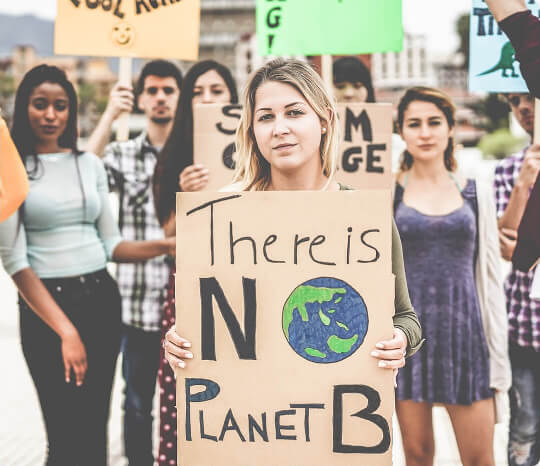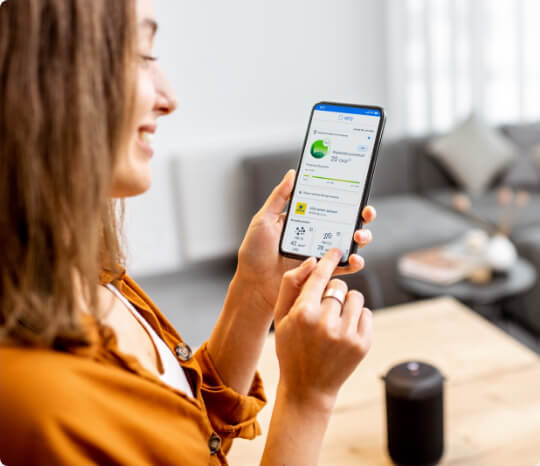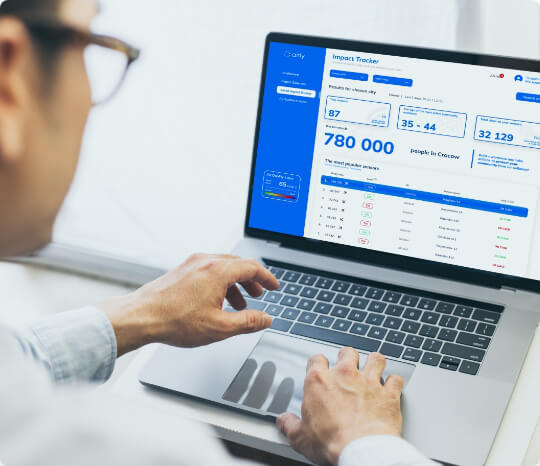Airly for Communities
Kick air pollution out of your local area
If you are concerned about your local air quality, Airly can help. With our tools, you can receive accurate, real time, hyperlocal data on the air that you are breathing every day. Together with local activists and government, you can use this data and analysis to understand sources, design improvements and track their progress.
Why is this so important?
According to the latest data by WHO, a shocking 99 per cent of the world's population breathes polluted air that exceeds internationally approved limits. The their negative impact affects individuals at a much lower level than previously thought.
Remodel your surroundings by creating a greener and friendlier place to live. Clean air increases the chances of a long and healthy life. When there is hope for improvement, reliable data is the most effective tool to enable local decision-makers.


Let's #RepairTheAir together
Your commitment to raising awareness of air quality in your area will be valuable for the entire community and inspire others.
We can help with crowdfunding campaigns and engaging local communities to raise funds for a network of devices in your neighbourhood.
Remain informed and up-to-date
You can view real-time air quality data via the Airly Map on mobile applications and desktop computer.
Set your favourite locations and get alerts when pollution levels change. and share air quality data on social media. You can also see a 24 hour forecast to help planning.


Measure it to change it
The Airly Data Platform is the perfect and complete solution for all clean air activists. With the involvement of local authorities, media and institutions, you can understand the main causes of pollution and take adequate measures to reduce and eliminate them. By knowing the exact causes of the problem, you can fight it.
Impact Tracker
Airly network of hyper-local sensors and public stations assure special connection between communities, companies, and governments. Thanks to Impact Tracker, local officials know which locations attract the most attention from the community and which locations demand concluding targeted actions.
The community also get an exceptional value - an argument „in the fight for clean air„ - a reliable illustration of the air quality around us on the Airly Map undeniably influences local authorities and decision-makers.

Benefits for global communities
Low-cost, accurate and certified sensors
Airly Mobile App with air quality notifications
Impact Tracker with data about community engagement
Air Quality blog for education
Media partnership to share air quality results
Case study:
#LetSchoolsBreathe campaign for the UK, USA, Poland and Romania

The campaign assumptions
Good air quality is crucial to promoting and improving children's health. The first step towards improving air quality is improving overall awareness by making air quality data more accessible to school staff, parents, and children. Air quality has recently come to the forefront of political discourse in the wake of the ongoing pandemic.
An Airly sensor which measures particulate matter (PM) and gases is offered for a 6 month period, completely free of charge. The sensor will monitor outdoor levels of Particulate Matter (PM1, PM2.5, and PM10) and dangerous pollutant gases like NO2 which is particularly harmful to children. This data is available to view for free on an easy to use, color coded air pollution map via our Airly Mobile App or desktop map (airly.org/map/en).
Our goal
Throughout the 6 months your school will have the sensor we aim to help engage parents, the community, and your local governments by providing them with essential data about the air your school children are exposed to. With this data, schools, parents, and governments can act in a multitude of ways to better protect their students. Schools can make changes to school activities and student schedules to better mitigate student's exposure to dangerous emissions, while governments can use the data to identify significant emission sources in and around the schools.
